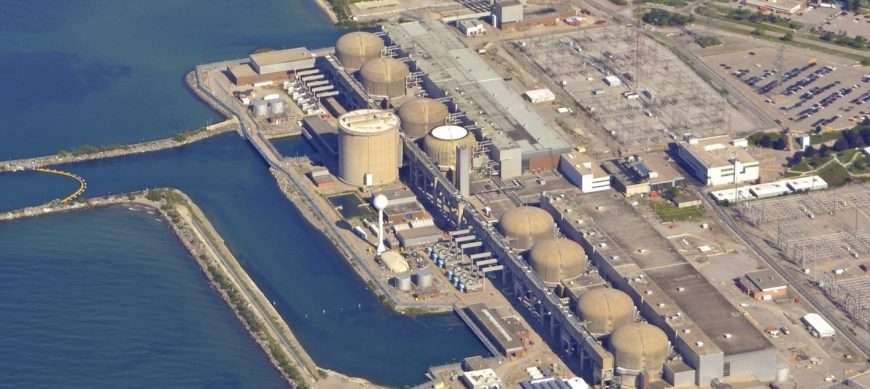The Bruce Power nuclear power plant (BP NPP) in Ontario, Canada, is the largest nuclear generating station in the world, operating eight nuclear reactors producing 6300 MW.
In line with Bruce Power’s safety culture, “Safety first” and continuous improvements are essential and substantial elements of the Bruce Power philosophy and management system. After the Fukushima nuclear accident, the Canadian Nuclear Safety Commission (CNSC) released recommendation 5c which asked for the improvement of tools to provide off-site authorities with automated real-time stations, appropriate back-up power, redundant communication channels, and the like.
For BP it became essential to measure not only gamma dose rate, but additionally collect information about the composition of nuclides. Moreover the system should be able to measure and operate reliably even with gamma dose rates up to 1 Sv/h, as seen during the Fukushima event.
Besides long-term reliable operation under harsh Canadian weather conditions, a key issue was safe operation and data transmission during an emergency. Consequently, compliance with seismic requirements, permanent autonomous operation and a reliable redundant communication interface were key specifications requested by Bruce Power.
The tender published in 2012 was divided into two parts: The first part comprised a total of 49 fixed and 10 mobile spectrometric stations to which Saphymo responded with the SpectroTRACER probe with LaBr3 (Ce) scintillation detectors with additional GM tube and GPS.
This probe is a fully autonomous self-contained gamma spectroscopic measurement station designed to operate in emergencies, including in worst-case weather scenarios. Battery capacity is available for up to 10 days. Several communication interfaces are provided: cell/3G modem, Globalstar satellite modem, both integrated and operated over Virtual Private Network (VPN) for secure data transmission.
The network interface is always active. Software functions provide an automatic switchover from cellular to satellite. A built-in webserver is available for easy remote control and setup. Several meteorological stations have also been integrated into the system.
After a test run of several months during 2013, all stations have been operational since autumn 2014. In the second part of the project, Saphymo delivered 8 SA200NG and SA210ING air monitors.
The air monitors have been designed for the detection of ultra-low activities of beta/gamma measurement for particulates, noble gas and iodine with spectroscopic functions and the same redundant data transmission. The SA210ING type air monitors are equipped with an internal power backup for up to 5 days.

